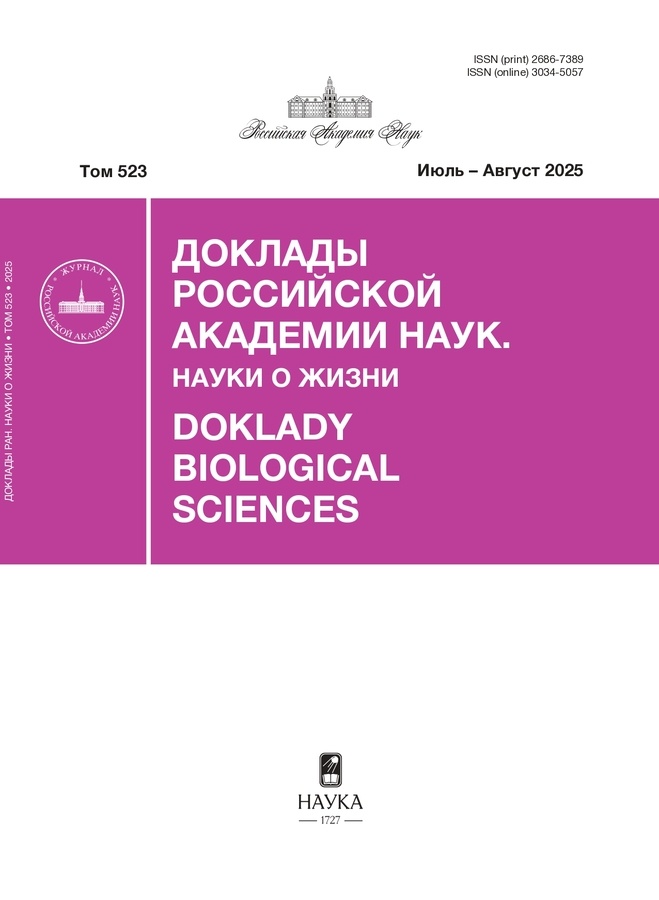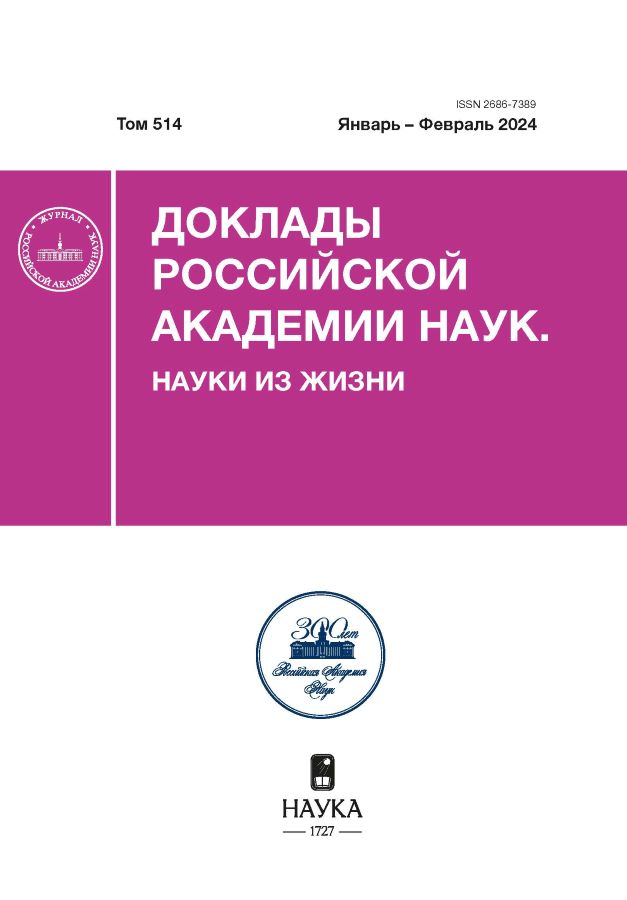Anatomy of digestive system and feeding mechanism of Quatuoralisia malakhovi (Hemichordata, Torquaratoridae)
- Authors: Malakhov V.V.1, Lukinykh A.I.1, Ezhova O.V.1
-
Affiliations:
- Lomonosov Moscow State University
- Issue: Vol 514, No 1 (2024)
- Pages: 21-25
- Section: Articles
- URL: https://rjeid.com/2686-7389/article/view/651457
- DOI: https://doi.org/10.31857/S2686738924010042
- EDN: https://elibrary.ru/LAAAXM
- ID: 651457
Cite item
Abstract
An anatomical study of the digestive system of the deep-sea enteropneust Quatuoralisia malakhovi was carried out. It is shown that the lateral collar lips are twisted in such a way that they form a ciliary groove leading to an internal channel through which the collected detritus particles are transferred to the peripheral pharyngeal channels. The size of the selected particles ranges from 1–6 μm to 100–200 μm, which corresponds to feeding on the remains of planktonic diatoms. The importance of the faecal cord as an anchor holding the heavily watered jelly-like body of Torquaratoridae at the sea floor during feeding is noted.
Full Text
About the authors
V. V. Malakhov
Lomonosov Moscow State University
Email: olga_ejova@mail.ru
Academician of the RAS
Russian Federation, MoscowA. I. Lukinykh
Lomonosov Moscow State University
Email: olga_ejova@mail.ru
Russian Federation, Moscow
O. V. Ezhova
Lomonosov Moscow State University
Author for correspondence.
Email: olga_ejova@mail.ru
Russian Federation, Moscow
References
- Bourne D. W., Heezen B. C. A Wandering enteropneust from the abyssal Pacific, and the distribution of “spiral” tracks on the sea floor // Science. 1965. V. 150. № 3692. P. 60–63.
- Holland N. D., Clague D. A., Gordon D. P., et al. ‘Lophenteropneust’ hypothesis refuted by collection and photos of new deep-sea hemichordates // Nature. 2005. V. 434. P. 374–376.
- Holland N. D., Jones W. J., Jacob E., et al. A new deep-sea species of epibenthic acorn worm (Hemichordata, Enteropneusta) // Zoosystema. 2009. V. 31. № 2. P. 333–346.
- Holland N. D., Kuhnz L. A., Osborn K. J. Morphology of a new deep-sea acorn worm (class Enteropneusta, phylum Hemichordata): A part-time demersal drifter with externalized ovaries // J. Morph. 2012. V. 273. № 7. P. 661–671.
- Holland N. D., Hiley A. S., Rouse G. W. A new species of deep-sea torquaratorid enteropneust (Hemichordata): A sequential hermaphrodite with exceptionally wide lips // Invert. Biol. 2022. V. 141. e12379.
- Osborn K. J., Kuhnz L. A., Priede I. G., et al. Diversification of acorn worms (Hemichordata, Enteropneusta) revealed in the deep sea // Proc. Roy. Soc. (ser. B). 2012. V. 279. № 1733. P. 646–1654.
- Priede I. G., Osborn K. J., Gebruk A. V., et al. Observations on torquaratorid acorn worms (Hemichordata, Enteropneusta) from the North Atlantic with descriptions of a new genus and three new species // Invert. Biol. 2012. V. 131. P. 244–257.
- Ezhova O. V., Lukinykh A. I., Galkin S. V., et al. Deep-sea acorn worms (Enteropneusta) from the Bering Sea with the description of a new genus and a new species of Torquaratoridae dominating soft-bottom communities // Deep Sea Res. II. 2022. V. 195. P. 105014.
- Barrington E. J.W. Observations on feeding and digestion in Glossobalanus minutes // Q. J. Microsc. Sci. 1940. V. 82. P. 227–260.
- Burdon-Jones C. Observations on the enteropneust Protoglossus koehleri (Caullery & Mesnil) // Proc. Zool. Soc. London. 1956. V. 127. № 1. P. 35–58.
- Burdon-Jones C. The feeding mechanism of Balanoglossus gigas // Bol. Fac. Filos. Cienc. Letr. Univ. S. Paulo. 1962. V. 24. № 261. P. 255–280.
- Spengel J. Die Enteropneusten des Golfes von Neapel. Fauna und Flora des Golfes von Neapel und der angrenzenden Meeres-Abschnitte. Berlin: Herausgegeben von der Zoologischen Station zu Neapel. 1893. 756 S.
- Horst van der C. J. Hemichordata. Bronn’s Klass. Ordn. Tierreichs. 1939. Abt. 4. B. 4. № 2. P. 1–737.
- Hyman L. H. The Invertebrates: small coelomate groups. New York: McGraw-Hill Book Co. 1959. V. 5. 783 p.
- Cameron C. B. Particle retention and flow in the pharynx of the enteropneust worm Harrimania planktophilus: the filter feeding pharynx may have evolved prior to the chordates // Biol. Bull. (Woods Hole). 2002. V. 202. P. 192–200.
- Ежова О. В., Трухан М. А., Лукиных А. И. и др. Особенности питания глубоководного кишечнодышащего (Hemichordata, Enteropneusta, Torquaratoridae) из Берингова моря // Доклады Российской Академии Наук. Науки о жизни. 2021. Т. 500. № 5. С. 432–436.
- Benito J., Fernández I., Pardos F. Fine structure of the hepatic sacculations of Glossobalanus minutes (Enteropneusta, Hemichordata) // Acta Zool. (Stockh.). 1993. V. 74. P. 77–86.
- Bridges T. S., Woodwick K. H. Comparative morphology and function of hepatic caeca in four enteropneusts // Acta Zool. (Stockholm). 1994. V. 75. № 4. P. 371–378.
- Benito J., Pardos F. Hemichordata. In: Microscopic Anatomy of Invertebrates. New York: WileyLiss Inc. 1997. V. 15. P. 15–101.
- Smith K. L.J., Holland N. D., Ruhl H. A. Enteropneust production of spiral fecal trails on the deep-sea floor observed with time-lapse photography // Deep Sea Res. I. 2005. V. 52. P. 1228–1240.
Supplementary files













